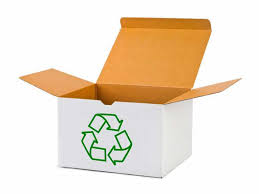
Sustainable packaging is inarguably the new hot term in the packaging world. Many big corporations and consumers are increasingly emphasising on sustainability. The natural instinct is to ask what is sustainable packaging? Sustainable packaging is the development and use of packaging which results in improved sustainability. The goals of sustainable packaging are multiple. First is functional (i.e. product protection, safety, regulatory compliance, etc.), the second one is cost effectiveness and the third one is to support long term human and ecological health.
It is always a good idea to look at the statistics to get a deeper and clearer understanding of an issue. According to a study, 51% of millennials will check packaging before purchase for sustainability claims, 70% of all consumers are likely to be influenced by environmentally friendly packaging, 39% of consumers always / often look for environmental information on beverage packaging, 70% of consumers have purchased an environmentally friendly product even when it cost more, 66% of consumers have avoided a particular product and / or brand for environmental reasons. The statistical figures speak volumes about the relevance of sustainability in the life of millennials.
There are many ingredients of sustainable packaging. Quite expectedly, sustainable packaging emphasises on the three R’s – reduce, reuse and recycle. It involves use of minimal materials – reduced packaging (reduced layers of packaging, lower volume, etc.), repeated reuse of package and use of materials which are frequently and easily recycled (also reduction of materials which hinder recyclability of major components). At the same time it is important to understand that sustainable packaging goes beyond the three R’s. It also involves use of renewable resources in packaging. It avoids the use of materials toxic to humans or the environment and takes into account the effects on atmosphere/climate – ozone layer, greenhouse gases (carbon dioxide and methane), volatile organic compounds, etc.
It is important to look at the multiple benefits of sustainable packaging. It reduces an organisation’s carbon footprint. It provides opportunity for cost reductions through minimised material usage and possible savings in storage and warehouse requirement (dependent on materials used). It has the potential to improve brand and consumer perception. Consumers are shifting towards sustainable packaging not only because they feel a sense of satisfaction by protecting the environment from possible damage but also because it is now seen as a symbol of social status. Therefore it won’t be wrong to say that sustainable packaging is a reality and not an overstatement.








Comments
That's the good way to
That's the good way to explain sustainability